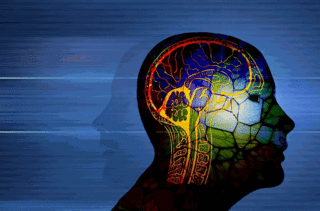Artificial Intelligence
New Trends in Brain Computer Interfaces (BCIs)
How neurotech and AI speed innovation in BCIs to treat neurological disorders.
Posted November 7, 2022 Reviewed by Kaja Perina

These are exciting times at the intersection of artificial intelligence (AI) and neuroscience. The trend in brain-computer interfaces (BCIs) is toward flexible and less invasive devices that can record brain activity for long periods of time. New types of brain-computer interfaces are rapidly emerging due to the combined power of AI software and hardware innovation in the neurotechnology. Recently, two new brain-computer interfaces reflect this trend and have been fast-tracked for clinical trials by the U.S. Food and Drug Administration (FDA).
The brain-computer interface market is expected to reach USD 3.7 billion by 2027 while expanding at a compound annual growth rate of 15.5 percent during 2020-2027, according to Grand View Research. brain-computer interfaces are a relatively modern technology that dates back to the 70s with the publication of “Toward Direct Brain-Computer Communication” in the Annual Review of Biophysics and Bioengineering by Jacques Vidal at the Brain Research Institute at the University of California, Los Angeles (UCLA). AI’s pattern recognition capabilities decode complex brain activity and convert it to digitized commands to operate computers, prosthetic limbs, and other external devices.
The FDA Breakthrough Devices Program is enables manufacturers the ability to engage with FDA experts during the premarket review phase and provides prioritized review of submissions. It is intended to enable patients to have more timely access to these medical devices and device-led combination products that diagnose or treat life-threatening or irreversibly debilitating diseases and conditions by expediting the development, assessment, and review process.
Last month a neurotechnology startup founded in 2021 called Axoft gained FDA Breakthrough Device designation for its bioinspired brain computer interface implant that enables chronic communication with the nervous system that can seamlessly integrate with brain tissues. What separates Axoft from other brain-computer interface companies is its soft, flexible polymer material which significantly decreases glial scarring while maintaining a high density of electrodes that can be chronically implanted in the central nervous system. Moreover, the startup says it has 1,000 times more electrode density than existing soft probes and is 10,000 times softer than existing flexible electronics.
Axoft’s neurotechnology was developed from work by Co-founder and Scientific Advisor Jia Liu, PHD, and Assistant Professor at Harvard’s School of Engineering and Applied Sciences. Earlier this year Lui and a team at Harvard University published a study in Advanced Materials demonstrating seamless and noninvasive pairing of neurons to electrodes to perform a long-term non-stop recording and capture of single-cell action potentials from a human induced pluripotent stem cell brain organoid using stretchable electrode arrays.
“The tissue-wide integrated stretchable electrode arrays show no interruption to brain organoid development, adapt to the volume and morphological changes during brain organoid organogenesis, and provide long-term stable electrical contacts with neurons within brain organoids during development,” reported Liu and his study co-authors at Harvard University.
In August 2022 Synchron’s breakthrough Stentrode brain computer interface was implanted in an American as part of at Mount Sinai Health System in New York City as part of Synchron’s COMMAND U.S. clinical trial. What makes the Stentrode revolutionary is that it is catheter-delivered and introduced into the body via the jugular vein and then guided through to the superior sagittal sinus, a large vessel that fits between both hemispheres in the brain. Moreover, the Stentrode’s signal quality does not attenuate over time, showing great potential as a chronic long-term implant.
“This is an incredible innovation in brain-computer interface technology,” said COMMAND Principal Investigator David Putrino, Ph.D., P.T., director of rehabilitation innovation for the Mount Sinai Health System, and an associate professor of rehabilitation medicine at Icahn School of Medicine at Mount Sinai. “I think we’re going to see a lot of people following suit because it’s a novel way of accessing and recording brain activity.”
Copyright © 2022 Cami Rosso All rights reserved.


